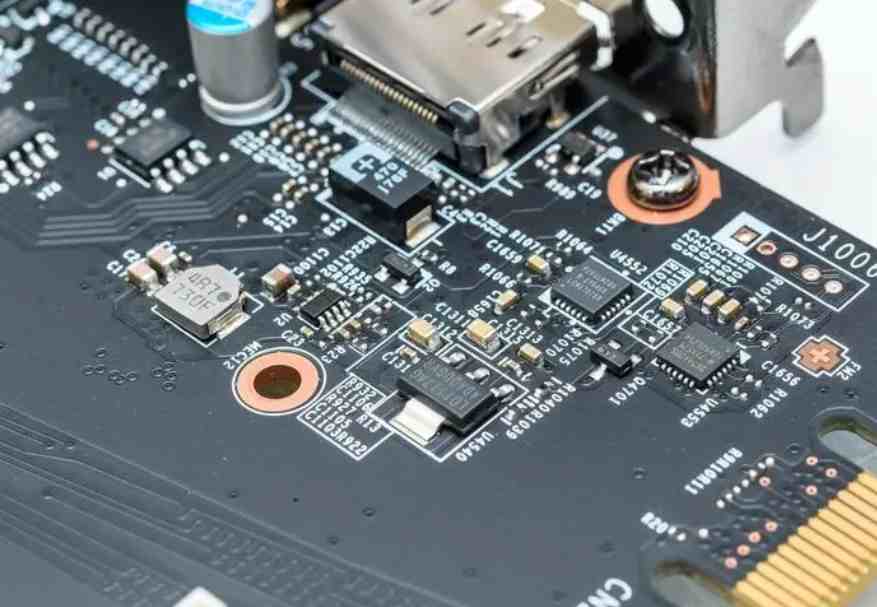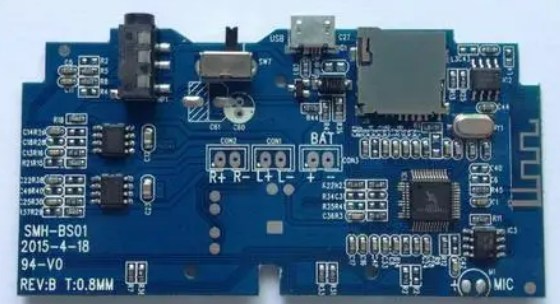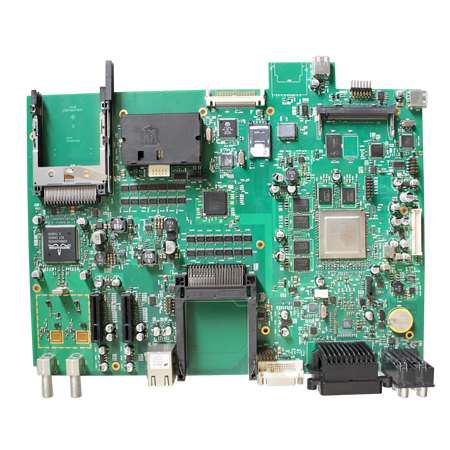
Printed circuit boards are the foundation of the electronics industry and are found in almost all electronic products. In recent years, with the rapid arrival of domestic scrap peak of electronic products, as well as the annual import of electronic waste from developed countries, a large number of discarded circuit boards are produced. At present, the technology of metal extraction and recycling in waste printed circuit boards has been relatively mature. However, there is the problem of recycling the large amount of metal that remains after extraction. These non-metallic substances account for 70%~80% of the composition of printed circuit boards, mainly composed of epoxy resin, glass fiber and brominated flame retardants. Traditionally, these residual wastes are directly buried or burned, which not only occupies a large amount of land resources, but also causes potential hazards to the surrounding environment due to the many toxic and harmful substances contained in these wastes, especially the printed circuit board containing brominated flame retardants. In the development and utilization of non-metallic materials, due to the lack of appropriate technology, they are used in the back incineration process. It is very easy to form a very harmful quality .
One, recycling method of epoxy resin in waste printed circuit board
1. Physical law
Physical method refers to the waste circuit board composite material mechanical powder into particles, diameter is usually 30 ~ 100 mesh, and then water or air flow body to separate the metal and non-metal powder, in which only changes the physical form of the material, its chemical properties have not changed. The main components of the non-metallic powder were glass fiber, epoxy resin and various additives. The debris can be used as a filler in the preparation of recycled materials, such as construction materials, sewer walls, composite materials, paints, surfboards, etc.
(1) Making building materials and various models
Many of the initial studies have attempted to add epoxy resin non-metallic powders in printed circuit boards to various products as fillers, and have made some progress. Mixing epoxy resin powder with sand, cement and water to make various building materials, such as brick and floor, can improve the bending strength and compressive strength of building materials. The epoxy resin powder can also be used to make a variety of models, which have better mechanical properties and lighter weight than the traditional gypsum as the raw material. Therefore, instead of plaster powder, it can be used in statues, ornaments and other models.
(2) Make epoxy resin composite materials
MOU Peng et al. P1 uses epoxy resin powder in printed board as filler to produce composite board. The pulverized epoxy resin powder is added to the epoxy resin binder instead of talc powder and silica powder, and the composite plate is molded. The biggest advantage of this kind of filler is that their compatibility with epoxy resin is significantly higher than talc powder and silica powder, and epoxy resin has a better attraction. Therefore, the products made have better mold processing and mechanical properties. The filling ratio can reach 30%. In addition, composite boards made from recycled PCB materials, such as epoxy powder, are easier to shape and level.
(3) Production of high value-added products
The mechanical properties of PCB products made from epoxy resin powder were analyzed. It was found that this kind of products had quite good flexural strength, durability and flexural strength. Therefore, when PCB epoxy resin powder is used to produce products with higher requirements for such properties, it often produces higher economic benefits.
Production of sewer manhole covers, in China about 90% of the sewer covers are made of cast iron, the price is high, often stolen, bring considerable economic losses. Now the sewer manhole covers made of epoxy resin powder and other substances are not only cheap, but also have better mechanical properties, especially high flexural strength, and all the performance indicators meet the requirements of China's national building standards and specifications (CJ/7130-2001). It can be widely used on pedestrian and arterial roads. In addition, the cost of manhole covers made from this material is much lower than that of cast iron.

2. Pyrolysis method
Pyrolysis is a process in which organic matter is heated to a fixed temperature under anoxic or anaerobic conditions to decompose into gas, liquid (oil), solid (coke) and then recycled. In recent years, the pyrolysis technology of organic wastes has been used more and more for its low pollution emission and high energy recovery. The use of pyrolysis technology to treat waste printed circuit boards can not only recover the metals in printed circuit boards, but also realize the recycling of non-metallic components such as resin and glass fiber, which has a certain attraction. Some scholars have carried out theoretical research and engineering practice on the pyrolysis technology of waste printed circuit boards. Under the action of pyrolysis, the chemical bonds of thermosetting epoxy resins break, and the large molecular structure of crosslinking is decomposed into small organic molecules, which are recycled in the form of liquid and gas bodies. The residues are mainly inorganic compounds such as glass fiber. Sun Lushe et al. investigated the pyrolysis of thermosetting epoxy FR-4 type waste printed circuit board (mainly composed of glass fiber reinforced brominated epoxy resin composite) in nitrogen atmosphere, which can produce 15%-21% liquid oil, 15%-20% gas and about 60% solid products. The gas products are mainly C0, C02,N2, bromobenzene and some lower hydrocarbons (Cl~ C2). After distillation of liquid oil at atmospheric pressure, four distillates of 14% light naphtha (< 120 T:), 30.5% heavy naphtha (120~ 180 T;) And 7.9 percent heavy naphtha (180-195 feet), and the rest bitumen.
The gas and liquid oil obtained from pyrolysis can be used as fuel directly after certain treatment, and can also be used as chemical raw materials to synthesize epoxy resin and other chemical products.
3. Supercritical method
Supercritical method is a method to recover useful substance by using the properties of supercritical fluid. Supercritical fluid SCF refers to fluids with supercritical temperatures and pressures above the critical temperature and pressure. In this range, the supercritical fluid has the dual characteristics of gas-liquid phase. On the one hand, it has the density and dissolution capacity close to the liquid phase, and on the other hand, it has the viscosity and high diffusion coefficient close to the gas phase, showing good flow and transfer performance. Near the critical point, the density of supercritical fluid is only a function of temperature and pressure, so the appropriate density can be generated under appropriate temperature and pressure, thus forming the ability to dissolve, extract and separate a variety of specific substances.
Decomposition process and products of epoxy resin binder material in a superboundary fluid environment during supercritical recovery of waste PCB circuit board. The waste printed circuit boards were recycled by supercritical CO and HO mixed fluid, and the epoxy resin was in the range of 220~290 T. At this relatively low temperature, decomposition reaction occurs. Bond breaking and cyclization reforming of polymeric materials with chain polymerization occur, which decompose into substances with small molecular weight. The main decomposition products are phenol, 1 or 2 bromo-phenol and aromatic adipose ether. Its molecular structure is similar to the products obtained by pyrolysis method, but due to the low decomposition temperature, no liquid decomposition products such as light and heavy naphtha are produced, which ensures the purity of the material recovery.
The particles generated by the decomposition of epoxy resin in supercritical fluid environment can be used as fuel or raw materials to synthesize epoxy resin and other chemical products after recovery and treatment. In addition, after supercritical fluid extraction of the bonded layer of cyclooxy resin, the PCB layers can be separated from each other naturally, and it is easy to realize the resource utilization of different materials.
4. Chemical solvent method
The chemical solvent method is used to recover the epoxy resin in printed circuit boards. Organic or inorganic solvents are used to open the macromolecular chains of the thermosetting epoxy resin crosslinked network structure in PCBs to generate organic compounds with low molecular weight. Small molecule organic matter is used as raw material or resynthesized epoxy resin composite material, residual inorganic compound is used as filler to produce epoxy resin composite material or other products. Masatoshi Kubouchi et al. found in their study of corrosion resistance of epoxy resins that bisphenol type F epoxy resins have low acid resistance and can be completely decomposed in nitric acid solvents. According to this characteristic, the epoxy resin solidified by aliphatic amine curing agent is decomposed into low molecular organic matter by nitric acid, and then the low molecular organic matter is extracted by ethyl acetate as extraction solution. After drying, the extracted material replaced part of the epoxy resin, mixed into the epoxy resin, and cured by curing agent, then the regenerated resin was prepared. The mechanical properties of the original resin and the regenerated resin were compared. It was found that the regenerated epoxy resin could be added up to 25% and had little effect on the mechanical properties of the regenerated product.









